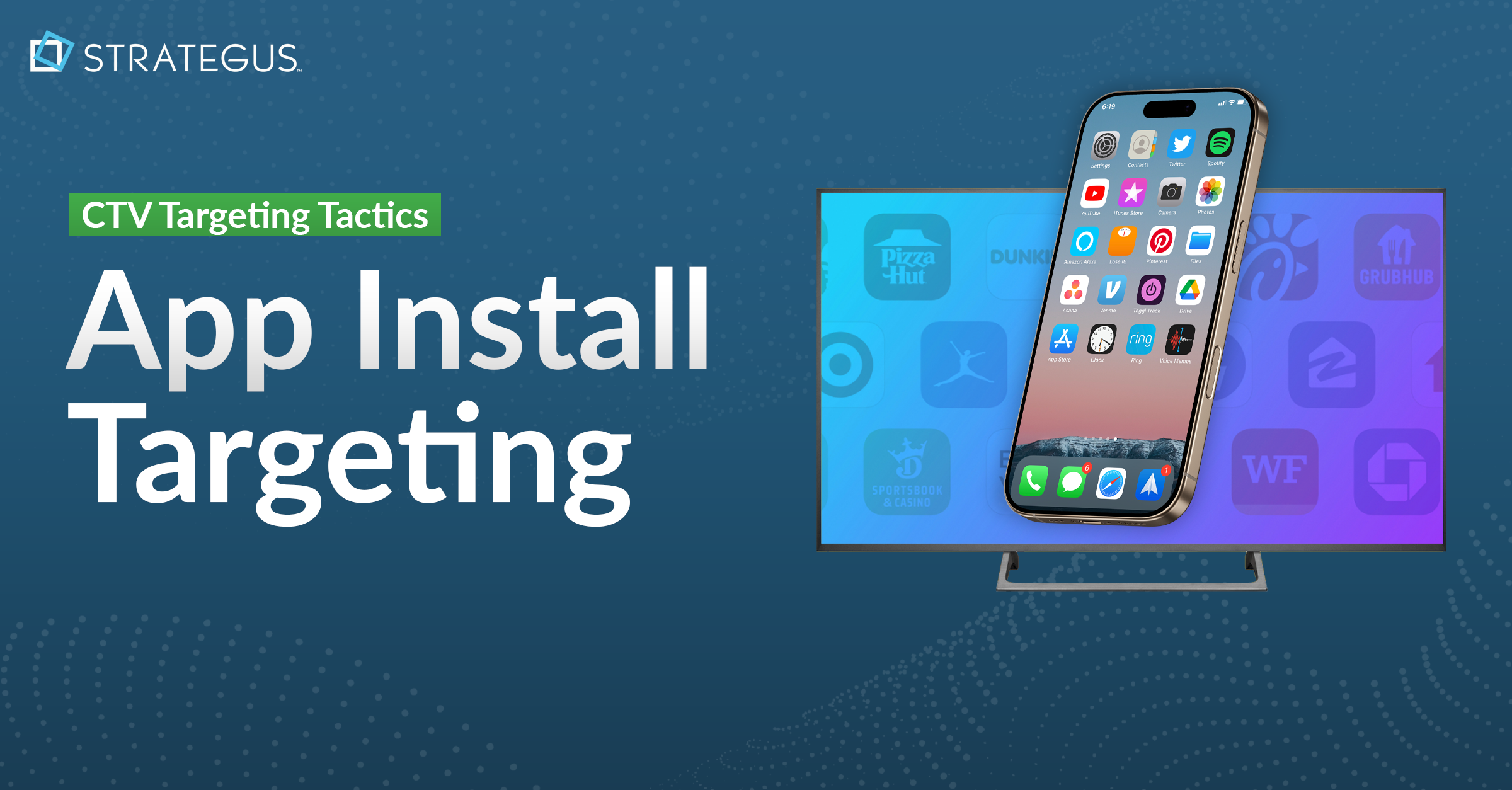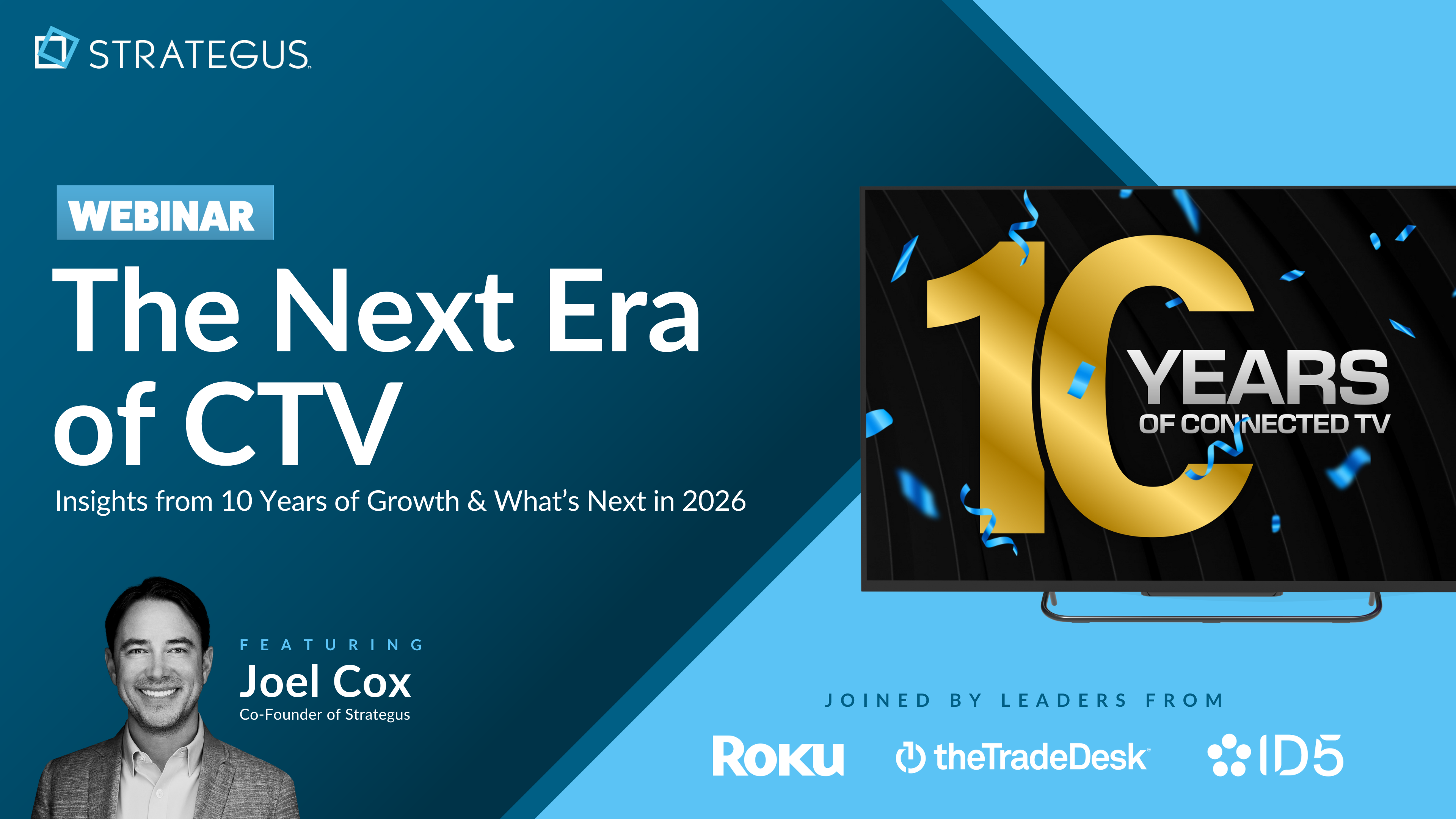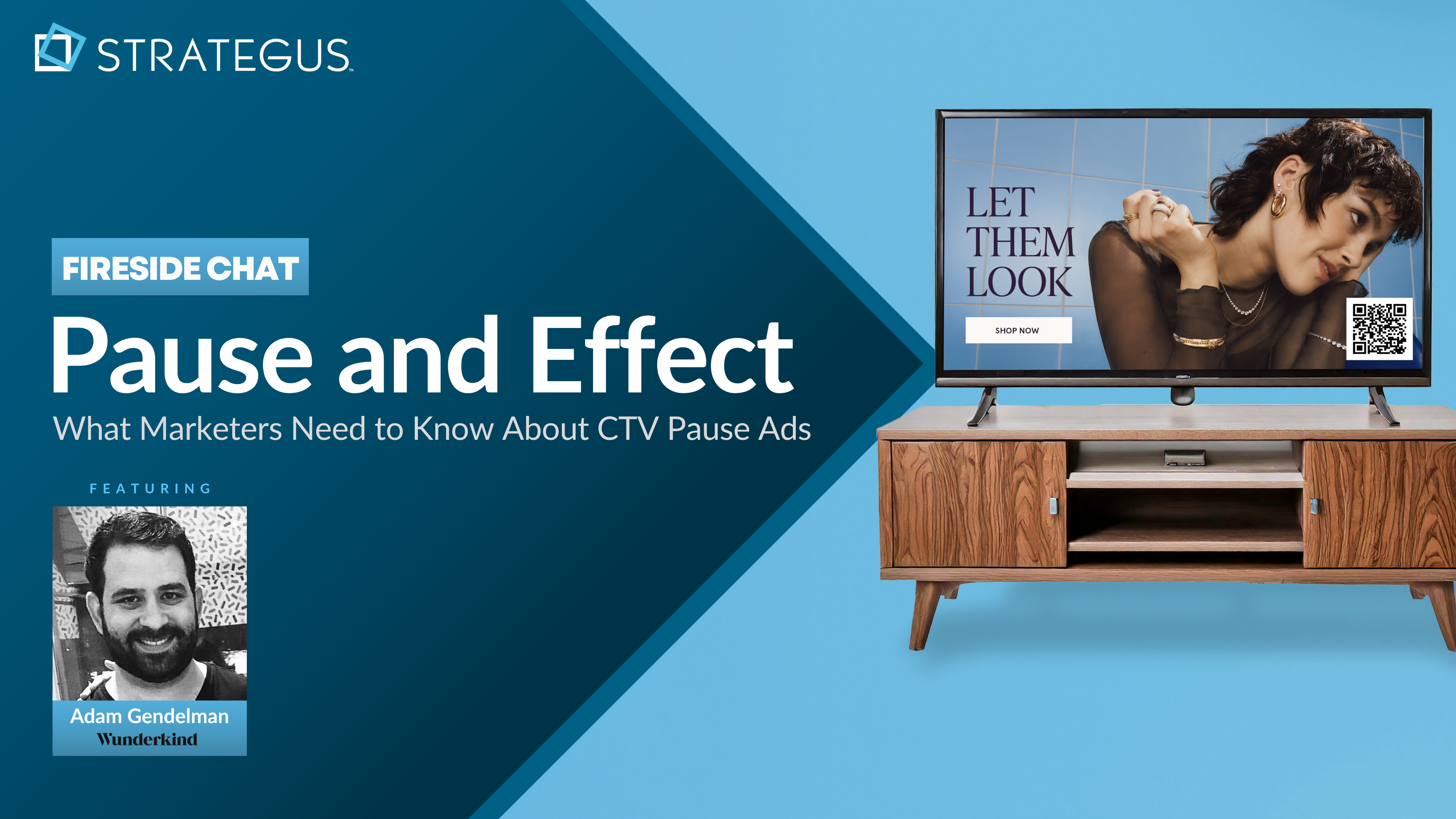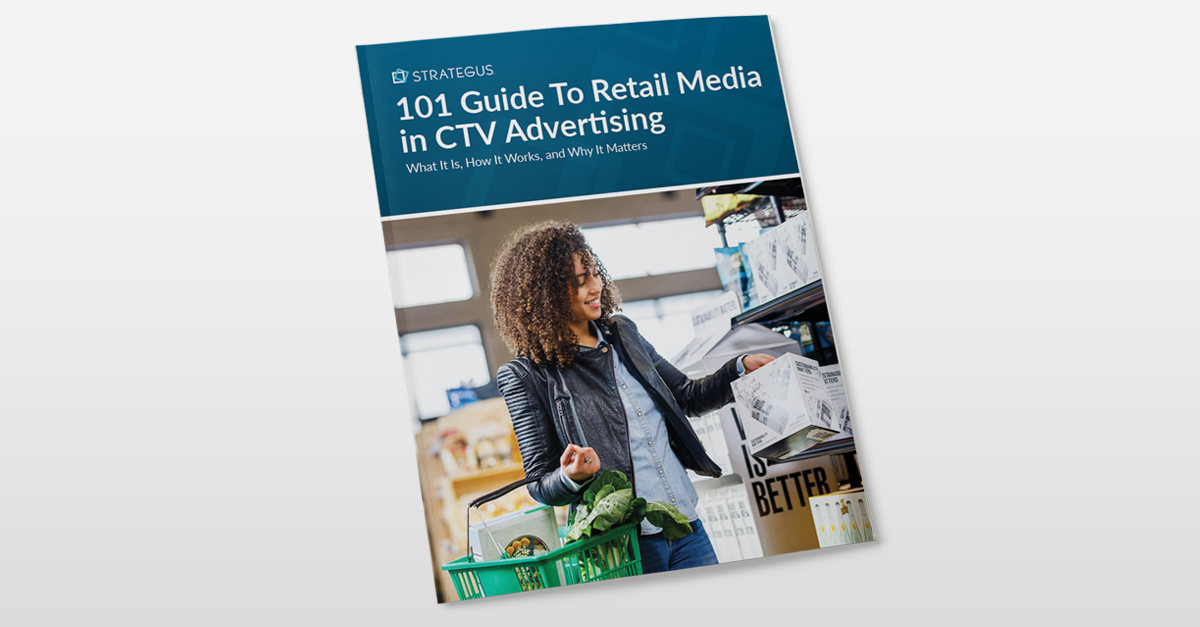- Home
- Strategus Blog
- What is Walled Garden Advertising & How to Break Free in 2025
What is Walled Garden Advertising & How to Break Free in 2025
 Traci Ruether
Traci Ruether
12 minutes read
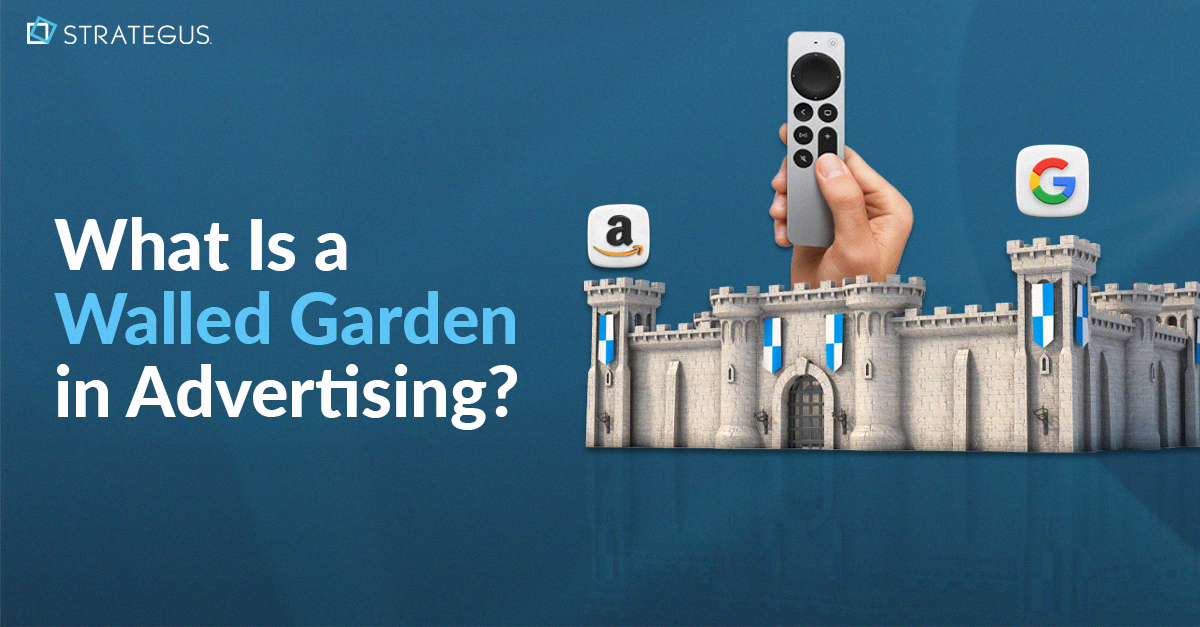
Platforms like Google, Amazon, Apple, and Meta control their own ads, data, and users. This makes it hard for advertisers to track performance or run ads across platforms.
These walled gardens limit choice and hurt results.
This article explains what walled gardens are and how advertisers can break free, especially in CTV, where ad transparency is still a problem.
What Is a Walled Garden?
A walled garden is a closed ecosystem controlled by a single company that sets all the rules, from how its data and applications are accessed to how and when they’re paid. Most notably, walled gardens are designed to prevent their data from leaving in a format that’s interoperable with other ecosystems.
In the context of advertising, walled gardens refer to the platforms that are in charge of:
- What content users see
- Which companies can place ads
- Which user segments are served the ads
- What users do after seeing the ads (e.g., click, convert, etc.)
- How this goldmine of data is collected, shared, and re-monetized
Some of the most well-known examples of walled gardens in advertising include Google, Amazon, Meta, and Apple.
These platforms have large active user bases and offer a varied approach to driving engagement and monetization (such as search, social media, and e-commerce) all within their own ecosystem.
A Look at Google’s Walled Garden
Google controls over 91% of the search market and plays a major role in how we work, shop, and interact online.
Most of its revenue comes from ads shown on Google Search and YouTube. It also earns from cloud services, YouTube subscriptions, devices like Pixel, and tools like Gmail and Drive.
Because people use so many Google products, the company has access to huge amounts of user data. This fuels Google’s ad tech, which runs ads across both its own platforms and the wider web.
For marketers, the issue is that Google controls how performance is tracked. It uses “last-click” attribution, so if someone clicks your ad on Google, it takes full credit for the conversion.
Source: The Department of Justice
But the truth is, Google simply owns the platform that we’ve been trained to use when navigating the web. While countless other marketing efforts often contribute to branded searches, including brand awareness building with TV advertising, demand-gen efforts with search engine optimization, lead nurturing with retargeting tactics, the list goes on– Google takes 100% of the credit for providing a link to your website after these users have progressed through the funnel.
The Department of Justice explains:
“Google now controls the digital tool that nearly every major website publisher uses to sell ads on their websites (publisher ad server); it controls the dominant advertiser tool that helps millions of large and small advertisers buy ad inventory (advertiser ad network); and it controls the largest advertising exchange (ad exchange), a technology that runs real-time auctions to match buyers and sellers of online advertising.”
This makes it difficult for alternative search engines to compete with Google, while also forcing advertisers to adopt Google’s tools due to its vast market share.
A Look at Amazon’s Walled Garden
Another example is Amazon. The company already dominates retail e-commerce, cloud computing, organic grocery, content production, and streaming television. But that’s not all.
Amazon took the unprecedented move of shifting all Prime Video households to ad-supported by default earlier this year, thereby becoming one of the biggest players in CTV advertising overnight. Amazon is now the largest CTV platform in terms of its ad-supported audience size.
These details alone don’t make Amazon a walled garden, though. Rather, the retailer’s ownership over its entire ad tech stack is what seals the deal. Beyond just operating biggest e-commerce marketplace on the planet, Amazon quietly built its demand-side platform (DSP) to monetize this growing library of content (and the hundreds of millions of people who use Amazon apps, sites, and products daily).
Take it from our Co-Founder and EVP of Innovation, Joel Cox:
How Do Walled Gardens Work?
Walled gardens are self-contained environments that by intent and definition, either prevent users and data from leaving, or provide data in an inoperable fashion. This makes marketers beholden to a single inventory source, compromising their ability to holistically measure and engage target audiences across apps.
So why are walled gardens so prolific despite the cons that come with them? It often comes down to their dominance and a few key benefits.
1. Ease of Use and Simplicity
Google’s search engine indexes the internet’s unending complexity in its entirety. Then there’s Meta, a social media ecosystem that spans Facebook, Instagram, WhatsApp, and Threads. And don’t forget about Amazon, the world’s largest online retailer.
The playbook of these walled gardens is to build a robust platform where people want to be and then monetize the user base as a one-stop-shop for advertisers. In this way, walled gardens make it easy for anyone with a credit card and 30 minutes to run significant ad campaigns.
What’s more, advertising with a single or even a few walled garden(s) is often simpler than executing cross-platform ad campaigns. This forces marketers to tie their strategy to specific publishers or channels rather than taking an audience-centric approach that follows buyers across touchpoints.
2. Audience Segmentation
Another advantage that walled gardens offer advertisers is the ability to segment audiences based on user data collected within the ecosystem. This data can include demographics, interests, behaviors, past purchases, search intent, and more, allowing for ultra-targeted and personalized advertising.
Meta, for example, collects user data through its social media platforms and then allows advertisers to target people based on the pages they like, their political affiliations, and major life events. This level of audience segmentation is not always possible on open platforms, where user data isn’t as readily available.
3. Brand Visibility
Walled gardens also offer unprecedented brand visibility due to their large user bases. As such, companies that advertise on these platforms are better positioned to build brand awareness than their competitors that choose not to.
Going back to Google, a recent study conducted by SparkToro found that more than 63% of all web traffic originates from the search engine. Another 3.5% comes from the Google-owned YouTube. This means that by advertising on Google-owned properties, advertisers gain access to the lion's share of internet referral traffic.
This is exactly why well-known companies often pay Google to rank for their own branded keywords. Even though most users typing a company name into the search engine are already looking for that company’s website, Google acts as a gatekeeper and collects a toll along the way.
The Problem With Walled Gardens in Advertising
Digital advertising runs on data. And getting it right requires free and open access to this data. Unfortunately, walled gardens create barriers around this data and force advertisers to take a platform-centric approach to advertising.
Here are some problems with walled gardens:
1. Limited Reach
One of the main limitations of walled gardens is their reach. Because these platforms make advertisers dependent on specific ecosystems, they make it difficult to follow users across different publishers and channels.
This means that advertisers miss out on reaching potential customers who aren’t part of the walled garden’s user base. This can be especially problematic for smaller businesses or those with niche target audiences.
2. Lack of Transparency
Another issue with walled gardens is the lack of transparency they offer. Because platforms like Amazon Prime control the data within their ecosystem, advertisers don’t always have access to the same level of insights as they would using an open platform. Multi-publisher control also becomes a challenge.
Say a university wanted to run targeted connected TV (CTV) ads to drive prospective students to their site. Sticking with a single streaming platform like YouTube TV would only allow them to reach a handful of potential buyers. An alternative tactic would be to pick a few different CTV channels and execute them as separate campaigns. But then challenges arise in capping ad frequency and tracking the holistic journey across disparate touchpoints.
At Strategus, we overcome this by curating as many inventory sources as possible and measuring ad performance across all of them holistically. That way, no matter where our customers’ target audience goes, we’re able to reach them and optimize the user experience.
3. Vendor Lock-In
Last but not least, walled gardens create major dependency issues. Because these platforms control both the content and the advertising within their ecosystem, they can change their policies and guidelines at any time, potentially impacting the effectiveness of ads.
What’s more, if a platform experiences a significant decline in users or popularity, it can have a major impact on the success of advertising efforts.
Consider the Hollywood strikes last year. As platforms like Prime and Disney+ put a halt on releasing new content, Americans viewing habits changed overnight. But that doesn’t mean people watched less television, they just found something else to watch (and often somewhere else to watch it).
Perhaps that meant swapping new episodes of Euphoria on HBO for reruns of The Office on Peacock. Many viewers also checked out free channels like Tubi for the first time, resulting in major growth across free ad-supported streaming TV (FAST).
Regardless of where viewers went, the result was the same. Viewers moved away from particular apps when the original content dropped off and found something new.
And any advertisers relying solely on walled gardens like Netflix or Prime Video for their CTV advertising efforts were heavily impacted in the process. Why? Because their campaigns relied on specific streaming ecosystems, it wasn’t easy to adapt and advertise elsewhere.
This highlights a major challenge in the CTV space: given that churn has become a constant, vendor lock-in should be avoided at all costs.
How to Break Free From Walled Gardens in CTV Advertising
Walled gardens limit how and where you can run ads. To avoid getting locked in, you need an audience-first strategy that blends both closed ecosystems (like Google or Amazon) and open platforms. This gives you more reach, better targeting, and protection against sudden platform changes.
But doing this right takes more than just good creative—it requires deep industry access and advanced tools.
To run successful CTV campaigns outside of walled gardens, you need:
- A team with programmatic and CTV expertise
- Access to multiple DSPs, SSPs, and data providers
- Strong integrations with premium publishers
- Advanced targeting and retargeting tools
- Ongoing optimization and hands-on support
That’s where Strategus comes in. We’re the first and only pure-play CTV managed service partner built for this challenge.
Here’s how we help you succeed:
- Direct connections with 400+ CTV inventory and data partners
- Custom CTV targeting using both first- and third-party data
- End-to-end attribution tools that track every step of the buyer’s journey
- Powerful cross-device retargeting to stay in front of the right viewers
- A hands-on team to guide and manage your campaigns from start to finish
Now Is the Time to Future-Proof Your CTV Strategy With Strategus
Walled gardens aren’t going away—if anything, they’re getting stronger. In fact, Strategus Co-Founder Joel Cox predicts that Apple could soon launch its own DSP, further tightening control over iOS and Apple TV ads:
“It’ll be the walled garden of all walled gardens... I can't see a time when Apple doesn't set their eyes on connected television monetization.”
That’s why now is the time to build a flexible, data-agnostic strategy.
Strategus gives you the freedom to scale without limits.
Here’s what you get when you work with us:
- Access to a massive partner ecosystem of ad exchanges, SSPs, DSPs, publishers, and data providers
- Precision targeting and attribution that isn’t tied to one platform
- A vendor-agnostic setup that gives you full flexibility and future-proof performance
- Ongoing testing and innovation to keep your strategy ahead of the curve
Contact us today to simplify your CTV media buying and unlock better results.
Frequently Asked Questions
Why Are Walled Gardens a Good Option for Advertisers That Struggle to Collect Their Own First-Party Data?
Walled gardens offer rich, platform-collected audience data that helps advertisers target users without needing their own data sources. These platforms provide built-in segmentation, easy setup, and large user bases, making them ideal for brands that lack robust CRM systems or direct customer interaction.
What Platforms Allow Me to Advertise Across the Open Internet, Not Just Walled Gardens?
Platforms like The Trade Desk, MediaMath, and Magnite let advertisers reach audiences across multiple publishers. These tools support open internet advertising through real-time bidding, giving access to inventory outside Google, Meta, or Amazon. This approach increases transparency and avoids relying on a single platform.
What Are Walled Garden Advertising Platforms and How Do They Relate to Programmatic?
Walled garden platforms like Google, Meta, and Amazon offer programmatic ad buying only within their own ecosystems. They control targeting, inventory, and measurement, but limit cross-platform reach. Programmatic outside walled gardens enables advertisers to run unified campaigns across multiple websites and apps using open platforms.
Where Can I Scale Search Ad Campaigns Outside the Google Ecosystem?
You can scale search ads on Microsoft Advertising (Bing), Amazon, and privacy-focused engines like DuckDuckGo. These platforms offer lower competition and access to different user segments. For broader search retargeting, consider platforms like Yahoo or open web DSPs that integrate with alternative search partners.
Is YouTube a Walled Garden?
Yes, YouTube operates as a walled garden under Google. It controls the content, user data, and ad placements within its platform. Advertisers must use Google Ads to access inventory and can't independently track users or export campaign-level data to external measurement tools.
Is Facebook a Walled Garden?
Yes, Facebook is a walled garden. It controls all ad placements, audience data, and analytics within its own environment. Advertisers cannot move user-level data outside Meta's platforms, and they must follow strict policies when running ads across Facebook, Instagram, and other Meta-owned services.
What Does 'Walled Garden' Mean for the Internet in General?
A walled garden limits how users and data interact with the broader internet. Companies like Apple or Google create self-contained platforms where apps, ads, and data stay within their systems. This restricts interoperability and gives them full control over monetization and user access.
How Is Google Impacting the Advertising Industry?
Google influences every part of the digital ad supply chain. It owns tools for advertisers, publishers, and exchanges, which gives it unmatched control over inventory and data. This dominance affects pricing, attribution, and competition, and it limits transparency across the broader advertising ecosystem.
What Is the Difference Between Open Internet Advertising and Walled Garden Advertising?
Open internet advertising runs across multiple publishers using independent tools, while walled garden advertising happens inside platforms like Google or Meta. Open platforms offer more transparency and flexibility, but require greater setup. Walled gardens offer convenience but restrict targeting, attribution, and cross-platform performance tracking.
Why Is Vendor Lock-In a Major Risk in CTV Advertising?
Vendor lock-in ties campaigns to one streaming platform or tool. If viewership shifts or the platform changes policies, your ads may stop performing. This limits flexibility, weakens reach, and forces you to adapt on their terms. Diversifying across platforms helps avoid this problem.

Traci Ruether is a content marketing consultant specializing in video tech. With over a decade of experience leading content strategy, she takes a metrics-driven approach to storytelling that drives traffic to her clients' websites. Follow her on LinkedIn at linkedin.com/in/traci-ruether or learn more at traciruether.com.
Strategus is a managed services connected TV(CTV) advertising agency with over 60,000+ campaigns delivered. Find out how our experts can extend your team and drive the result that matter most.
Talk to an Expert
Table of Contents
Seeking a Custom CTV Strategy That Delivers?
What to read next
App Event Tracking: Tie Mobile App Activity to CTV Campaigns
Let’s say you’re running a CTV campaign for a personal finance app.
5 minutes read

Stop Guessing Who Your Audience Is — Let Their Apps Tell You
Connected TV (CTV) targeting often falls in one of two camps.
8 minutes read
See Who Bought After Your Ad + How Much They Spent
You can’t improve what you can’t measure. And for years, that’s been a major problem with TV advertising.
4 minutes read

First-Party Attribution: Match Ads to Sales With CRM Data
The value of first-party data continues to grow.
7 minutes read



